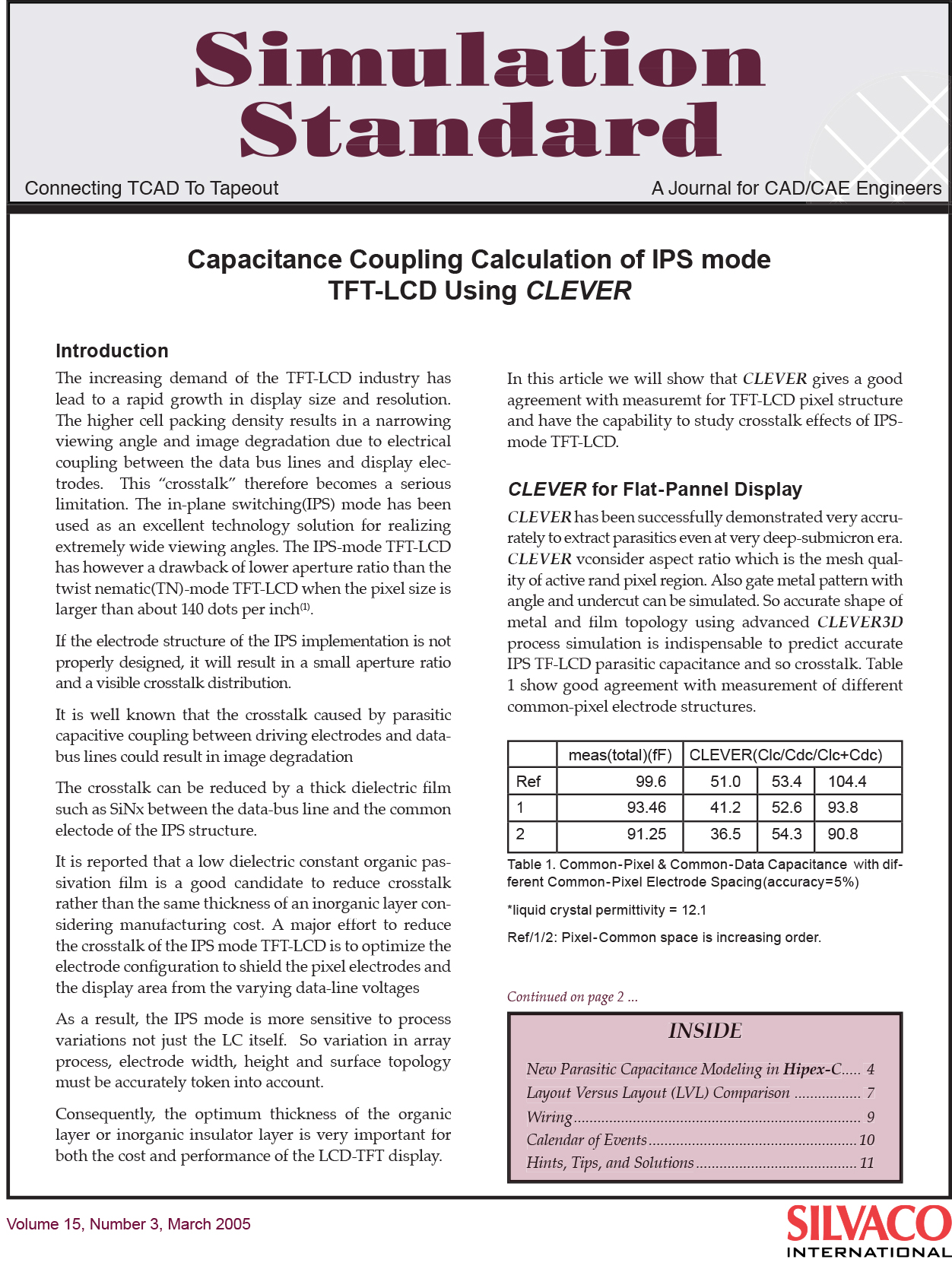Capacitance Coupling Calculation of IPS mode TFT-LCD Using Clever
Introduction
The increasing demand of the TFT-LCD industry has lead to a rapid growth in display size and resolution. The higher cell packing density results in a narrowing viewing angle and image degradation due to electrical coupling between the data bus lines and display electrodes. This “crosstalk” therefore becomes a serious limitation. The in-plane switching(IPS) mode has been used as an excellent technology solution for realizing extremely wide viewing angles. The IPS-mode TFT-LCD has however a drawback of lower aperture ratio than the twist nematic(TN)-mode TFT-LCD when the pixel size is larger than about 140 dots per inch(1)
If the electrode structure of the IPS implementation is not properly designed, it will result in a small aperture ratio and a visible crosstalk distribution.
It is well known that the crosstalk caused by parasitic capacitive coupling between driving electrodes and data-bus lines could result in image degradation
The crosstalk can be reduced by a thick dielectric film such as SiNx between the data-bus line and the common electode of the IPS structure.
It is reported that a low dielectric constant organic passivation film is a good candidate to reduce crosstalk rather than the same thickness of an inorganic layer considering manufacturing cost. A major effort to reduce the crosstalk of the IPS mode TFT-LCD is to optimize the electrode configuration to shield the pixel electrodes and the display area from the varying data-line voltages
As a result, the IPS mode is more sensitive to process variations not just the LC itself. So variation in array process, electrode width, height and surface topology must be accurately token into account.
Consequently, the optimum thickness of the organic layer or inorganic insulator layer is very important for both the cost and performance of the LCD-TFT display.
In this article we will show that CLEVER gives a good agreement with measuremt for TFT-LCD pixel structure and have the capability to study crosstalk effects of IPS-mode TFT-LCD.



